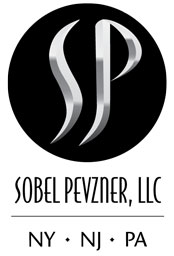NEW YORK STATE LABOR LAW: AT TRIAL AND FOLLOWING CLOSE OF EVIDENCE WITH MOTIONS FOR DIRECTED VERDICT
PENDING – CO-DEFENDANT PAYS 99% OF SETTLEMENT
New York Supreme Court; Nassau County: Curtis Sobel for the firm recently defended a National Retail client at trial in a case which presented both complex issues of law and hotly contested questions of fact which read more like a question concocted by Bar Examiners than the typical premises liability fact pattern. But with the severity of injuries creating the real potential for a seven (7) figure verdict, the trial strategy needed to address both fact and legal issues with the potential for “game time” changes depending upon the testimony of the six (6) witnesses who appeared during the liability phase of the trial. With post-evidentiary motions for directed verdicts pending, the matter settled in the high six (6) figures with the client’s contribution limited to 1%.
The plaintiff in this action was the owner of an HVAC company, in contract with the firm’s client, a tenant in a commercial strip center to perform both preventative maintenance and emergency repairs to a rooftop HVAC system. The claim was a fall from an elevated platform which both failed due to a lack of maintenance and was not equipped with a guardrail. Causes of action were alleged under common law negligence as well as NYS Labor Law 200, 240(1) and 241(6). Alleged injuries included multiple level spinal fusions overlaying significant pre-existing conditions and a substantial claim for loss of revenue.
The client’s predecessor in interest had entered into the relevant lease in 1979 with the Landlord’s predecessor in interest. While portions of the lease were clearly written, other portions were arguably ambiguous. New York Law is split on the issue of whether the interpretation of the lease is a question of fact within the purview of the jury or one of law for the Judge. Lease interpretation, whether by judge or jury included the definition of “demised premises,” “repairs and maintenance” along with the work letter and construction guidelines all of which were part of the lease.
Factually, almost every issue was contested by the parties. The lack of documentation from both the plaintiff’s company and the firm’s client raised serious doubt as to the whether the plaintiff was ever on the roof and if he was, could it be argued that the purpose of his visit did not fit within the statutory definitions upon which statutory liability under the Labor Law could apply. Testimony of “independent” witnesses confirmed that the plaintiff was on the roof at the time of the accident performing a repair; however, the plaintiff’s own sworn statement in the form of a Workers Compensation Form C-2 seemed to support an uncovered activity under the Labor Law.
The witnesses testifying in the case included the octogenarian risk manager for the co-defendant, the client’s store manager, the plaintiff, two former employees of the plaintiff and Nicholas Belizzi, an expert witness in civil engineering. With each witness, the case against the firm’s client needed to be weakened both factually and legally. The lack of documentation supporting the plaintiff’s testimony had to be argued as proof of a non-event, while alternatively, the defense also had to include arguments which, if accepted by the court, would result in the landlord’s liability for repairs and maintenance for the platform as a “roof structure” under the lease.
Ultimately, the Court agreed with Sobel’s argument that the interpretation of the lease agreement was a matter of law for his honor, Justice Libert to decide. At the outset of the trial, negotiations were ongoing with the Court suggesting contribution by the firm’s client of 33% of the the total settlement. However, following the close of testimony and post-evidentiary motions for directed verdicts being made by all sides, the matter settled in the high six figures with the firm’s client contributing only 1% to the overall settlement.


